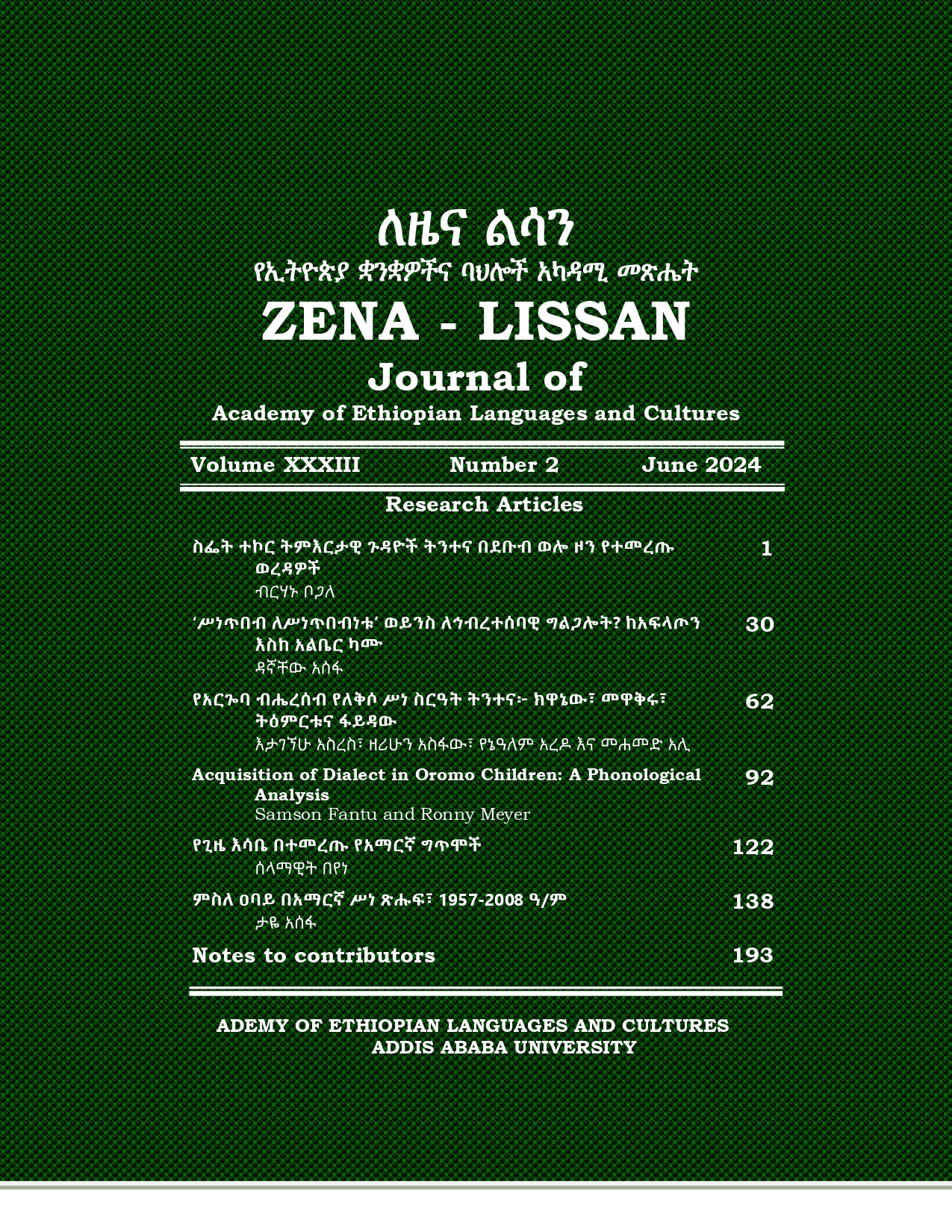Acquisition of Dialect in Oromo Children: A Phonological Analysis
Abstract
This study investigates the variations of Oromo phonological development in typically developing four-year old monolingual children in Ethiopia, where a broad range of Oromo dialects exist. The children’s phonological development was measured using picture naming test. Speech samples were collected from 70 children from Arero, Dera, Baate and Kamisee. These subjects formed two groups: Oromos who speak Oromo and live outside of Oromia (Baate & Kamisee), and Oromos who speak Oromo and live in Oromia (Arero & Dera). Independent and relational analyses were conducted to obtain phonological inventories as well as phonological patterns from children in Arero and Baate. Children across sites demonstrated similar sizes of consonant inventories, suggesting a common progression of sound acquisition in all dialectal areas, with few variations that impacted namely /kˈ/, /ʤ/, /s/, and /r/. The absence of statistical differences in children’s consonant accuracy across dialectal areas could be attributed to the minimal dialectal variation of adult Oromo. An unusual observation arising from the phonological pattern analysis was children acquiring the language deleted the first unstressed cluster and repeated and geminated the second stressed cluster. The phonological pattern analysis also provided insight on possible dialectal variations in Arero and Baate including gliding and stopping errors.
Keywords: [Acquisition of dialect variations, Cushitic, Oromo, Phonological development,]

